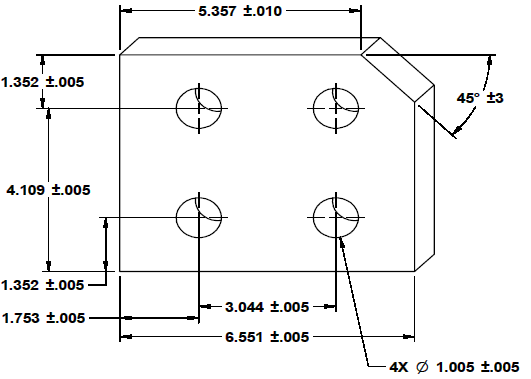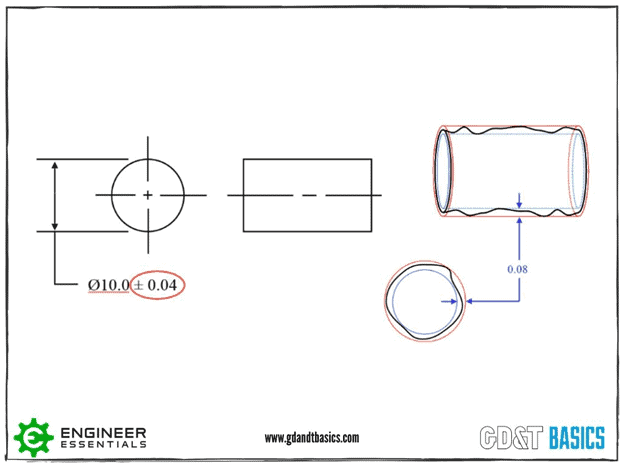

#ISO EQUIVALENT OF ASME Y14.5 ISO#
One hundred and thirty-three people from varying industries, company sizes, and 27 countries responded to the survey. INTEGRATED TRAINING RESOURCES GD&T SUMMARY BASED ON ASME Y14.5-2009 and ISO 1101 and related standards 2000-20 W OODLANE D R. For moreĭetails see: NONMANDATORY APPENDIX A PRINCIPAL CHANGES AND IMPROVEMENTS. In fact, a recent survey by Alex Krulikowski showed that ASME Y14.5 may be used more often than ISO GD&T standards. Ultimate GD&T Pocket Guide: Based on ASME Y14.5-2009. This is not a comprehensive list of changes. Technical Drawing for Product Design: Mastering ISO GPS and ASME GD&T (Springer Tracts in. 1) FIPS-PUB-119, Ada (also issued as ANSI/ISO/IEC 8652: formerly. This course highlights the most significant of these changes and provides answers to your questions on new, changed, and deleted content as compared to the previous revision (ASME Y14.5-2009).
#ISO EQUIVALENT OF ASME Y14.5 SERIAL#
Tolerance may be applied to a tangent plane for one or more coplanar featureįaces that are perpendicular to an axis of rotation. The latest version of the serial local area network (LAN) for military avionics. ASME Y14.5-2018 GD&T Update Course 2 hours The latest ASME Y14.5-2018 Standard contains many clarifications and improvements. Phantom lines to specify unequally disposed profile tolerance as an alternate Paragraph 7.5.ĭisposed profile tolerance may only be indicated with U symbol. Material envelope” and “an unrelated minimum material envelope”. Similarly, “a minimum material envelope” has been changed to “a related minimum Types of True Geometric Counterparts –Įxpanded from “an actual mating envelope” to “a related AME” and “an unrelatedĪME”.

ISO Geometrical Tolerancing Reference Guide. Paragraphs 11.10 and 11.11 New or revisedĭatum feature simulator” was replaced with “ true geometric counterpart”. content found in the latest release of the ASME Y14.5-2018 Standard. See Appendix for approval authorization from ASME and Tec-Ease. The function of the dynamic profile is toĪllow form to be controlled independent of size. Figures reprinted from ASME Y14.5-2009, by permission of. Profile tolerance zone modifier” is new, for use with profile tolerancing. Deletion of the symbols does not leave industry without a means to control coaxial or symmetrical features, but it does eliminate the confusion that surrounds these symbols and their misapplication.”ĭirection in which a tolerance or other requirement applies. “Two past practices, use of concentricity and use of symmetry have been eliminated because other characteristics provide more direct control of features and establish requirements that have a well-defined meaning. (phew!) Removed symbols:Ĭoncentricity, definition and symbol, has been removed The layout of standard has been revised as well – all sections have been renumbered but the order of information hasn’t changed. Figures have been updated to include model-based application of dimensions and tolerances. Although GD&T has become widely used as a generic description of Geometrical Tolerancing, strictly speaking, it is the name of the American system (Geometrical Product Specification, or GPS, being the ISO equivalent). It defines the system known as Geometrical Dimensioning and Tolerancing (GD&T). The Geometric Tolerancing (GD&T) feature allows you to easily create various geometric tolerancing symbols based on ASME Y14.5M-1994, or ISO 5459-1981.

An addition of updated figures accounts for this volume increase. ASME Y14.5 is the American standard for Dimensioning and Tolerancing. The new standard is much thicker than the previous – 328 pages, a whooping increase in size from 214. ASME has just released Y14.5-2018 Dimensioning and Tolerancing Standard.īelow is a highlight of handful of changes at first glance.


 0 kommentar(er)
0 kommentar(er)
